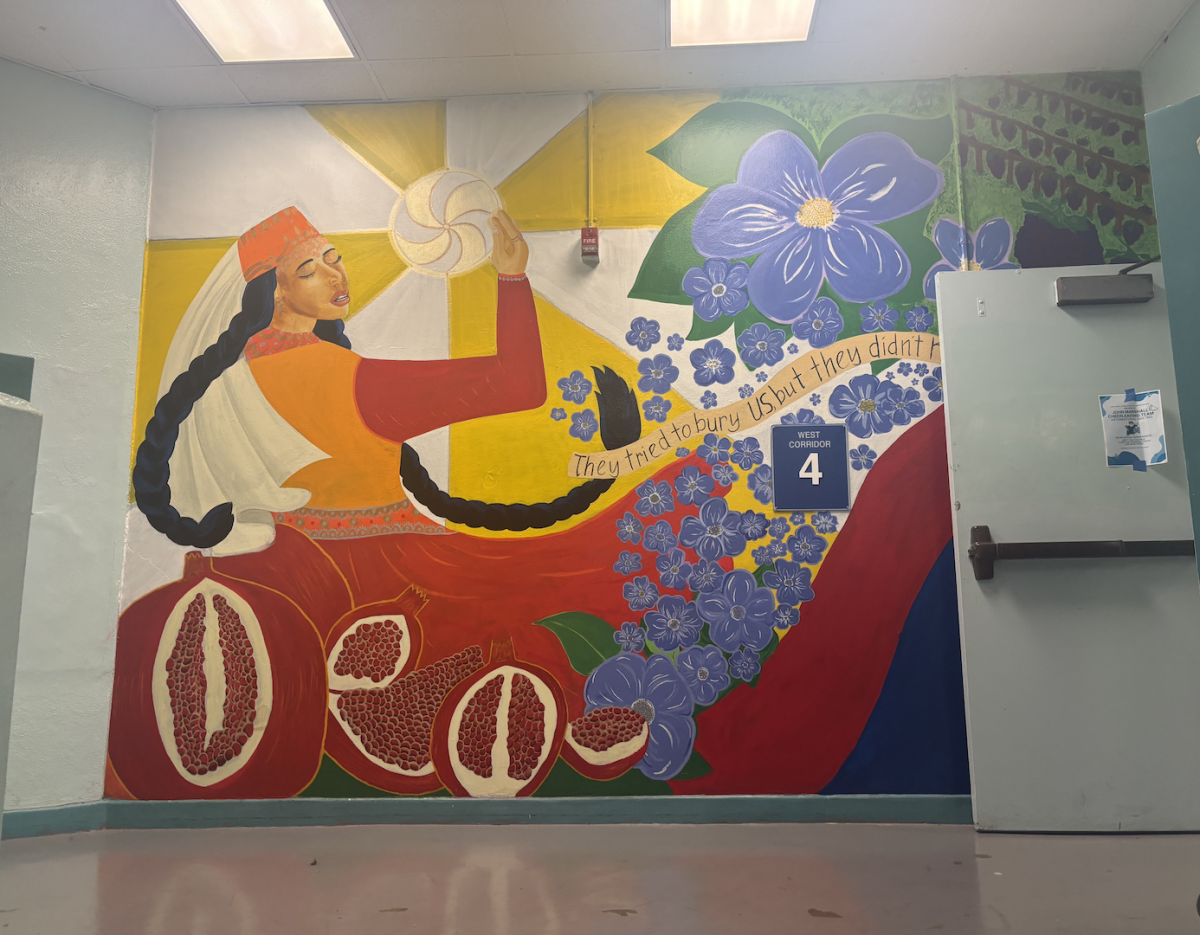
Itzak Salazar
The new mural sponsored by the Mural Club.
From 1894 to 1896, Ottoman rulers carried out the Hamidian Massacres, a violent campaign that claimed the lives of over 150,000 Armenians. This marked the beginning of a great tragedy in which over a million Armenians would face mass killings, forced deportations, and Islamization.
The Armenian people began as a collective of tribes who inhabited the mountains of Western Asia. Over the past 2,000 years, they were ruled by various local and invading powers, until the Ottoman Turks eventually gained control of the region. Under Ottoman rule, the empire’s systematic bias in favor of Islam made life increasingly difficult for Armenians, as well as other minority groups like Greeks and Jews.
Then, on April 24, 1915, hundreds of Armenian intellectuals were arrested in Constantinople. They were sent into exile and brutally killed. This date is now widely recognized as the start of the Armenian Genocide—a crime that remains denied or ignored by many to this day.
To recognize the tragedy that occurred, students Anna Torosyan and Victoria Oganesyan at Marshall created an art exhibit to try and educate students on the event that occurred.
When I spoke to Anna, she had this to say.
Question: What does this day mean to you personally?
Anna: It means remembering our ancestors, remembering the loss that we faced, and how we overcame it over the years
Question: What is the purpose of Armenian Genocide Genocide Day?
Anna: The purpose is to remember the tragedy that occurred and remember our loved ones, and all the lives affected.
Question: What does this day represent?
Anna: This day represents strength in unity and shows that you can stand up and recognize problems. It’s our (Armenians) opportunity to remember loved ones and the land that was taken.